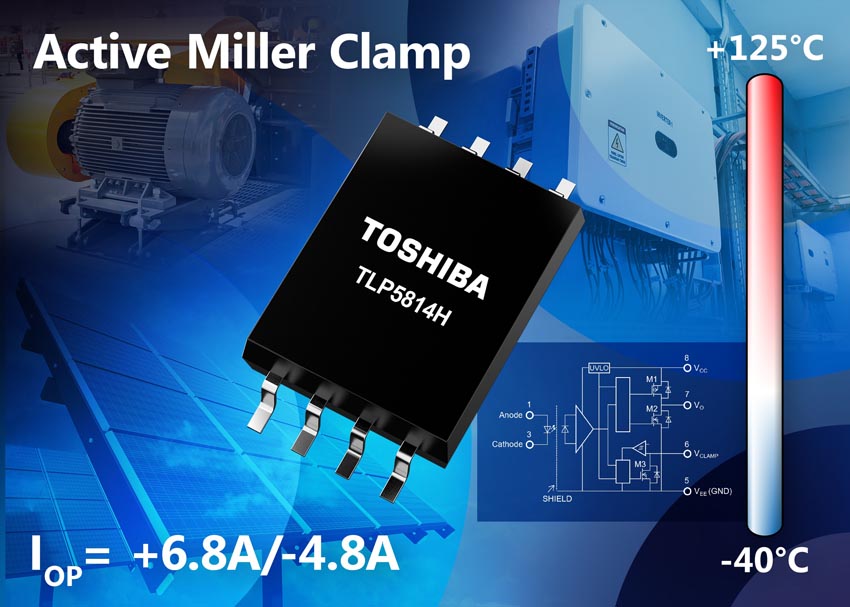Toshiba Electronics Europe has launched a gate driver photocoupler suitable for driving silicon carbide (SiC) MOSFETs in industrial equipment like industrial inverters, uninterruptible power supplies (UPS), and photovoltaic (PV) inverters, which experience harsh thermal environments. The TLP5814H is a highly integrated gate driver featuring a built-in active Miller clamp circuit that helps improve system safety and lower overall solution size by minimising the number of additional external components required.

The integrated active Miller clamp circuit in the TLP5814H has a channel resistance of 0.69 Ω (typ.) and a peak clamp sink current rating of 6.8 A. These features help to prevent the self-turn-on phenomenon associated with some power devices like SiC MOSFETs and insulated gate bipolar transistors (IGBTs) which are highly sensitive to changes in gate voltage. The integrated Miller clamp in the TLP5814H reduces system cost, size and complexity by mitigating the requirement for designers to include an additional negative power supply and implement an external active Miller Clamp circuit.
This gate driver photocoupler can provide a maximum peak output current of +6.8/–4.8 A with rail-to-rail output, which helps to improve system switching performance while ensuring stable operation. An internal Faraday shield ensures common-mode transient immunity of ±70 kV/µs (min).
 |
| The TLP5814H simplified internal circuit. |
TLP5814H can operate reliably in temperatures ranging from –40 to 125 °C due to the enhanced optical output of the infrared light emitting diode (LED) on the input side and an optimised high-gain, high-speed light-detecting photodiode array, which helps to improve optical coupling efficiency.
To improve board layout flexibility, the TLP5814H is offered in a small SO8L package measuring only 5.85 × 10 × 2.1 mm. Furthermore, it has a minimum creepage distance of 8.0 mm which makes it suitable for use in applications requiring high insulation performance.